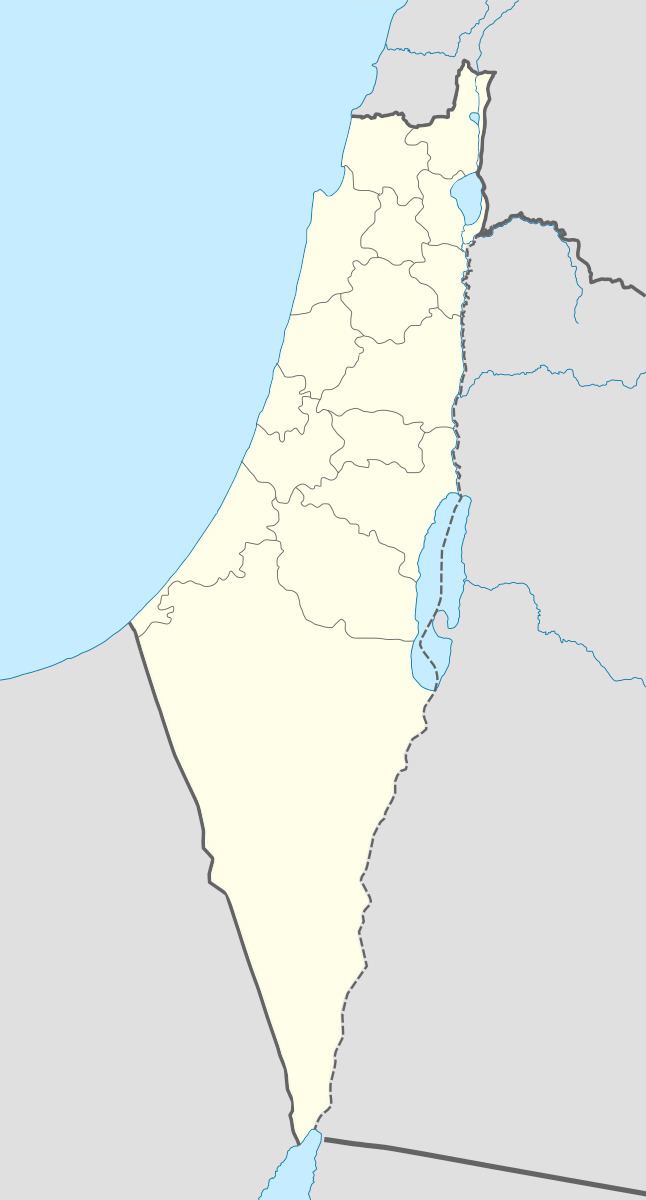Arabic إجليل Population 470 (1945) | Also spelled Jalil al-Qibliyya Palestine grid 132/174 Local time Friday 8:11 PM | |
 | ||
Name meaning El Jelil, meaning "illustrious/grand" (Ar), or "a district/circuit"(He) Weather 17°C, Wind E at 8 km/h, 78% Humidity | ||
Ijlil al-Qibliyya, also al-Jalil, was a Palestinian Arab village in the Jaffa Subdistrict. It was depopulated during the 1947–1948 Civil War in Mandatory Palestine on April 3, 1948.
Contents
In 1945 the village has a population of 680, 210 of which were Jewish. Ijlil al-Qibliya was named after al-Shaykh Salih 'Abd al-Jalil, whose maqam was located in the village.
Location
Ijlil al-Qibliyya, (meaning "Southern Ijlil"), was located on a hilltop, 13 km (8 mi) northeast of Jaffa, and about 100 meters southwest of its sister village, Ijlil al-Shamaliyya ("Northern Jilil").
History
During the late Ottoman period, in June 1870, the French explorer Victor Guérin visited both villages. He described them as one village, called Edjlil, situated on a hill and divided into two districts. Together, they had 380 inhabitants. The houses were built of rammed earth or with different small aggregates mixed in with kneaded and dried silt. In 1882, the Palestine Exploration Fund's Survey of Western Palestine described the two villages, named El Jelil, as "a mud village, with a well to the south and a second to the north. [..] A small olive-grove exists to the south-east."
British Mandate era
In the 1922 census of Palestine conducted in 1922 by the British Mandate authorities, the two Ijlil -villages (spelled Jelil) had a population of 154 residents, all Muslims, increasing in the 1931 census to a population of 305, still all Muslim. In 1945 the population of Ijlil al-Qibliyya was 470 Arabs, with 8,692 dunams of land, according to an official land and population survey. Of this, 923 dunams were for citrus and bananas, 85 for plantations and irrigable land, 7,087 for cereals, while 6 dunams were built-up land.
In the archive of the city of Herzliya, it is possible to find evidences to the close relationship with Ijlil, such as a greeting letter that was sent to Hajj Akhsein Al-Assi of Ijlil.
1948, and aftermath
In December 1947 and January 1948 the leaders of al-Shaykh Muwannis, Al-Mas'udiyya, Al-Jammasin al-Sharqi/Al-Jammasin al-Gharbi, and the mukhtars of 'Arab Abu Kishk and the two Ijlil-villages met with Haganah representatives in Petah Tikva. These villages wanted peace, and promised not to harbor any Arab Liberation Armies or local Arab Militia. They further promised that, in the case they were not able to keep them out alone, they were to call on Haganah for help.
By mid-March 1948, the Alexandroni Brigade had imposed isolation, a "quarantine", of al-Shaykh Muwannis, 'Arab Abu Kishk and the two Ijlil-villages. However, on 12 March LHI kidnapped 5 village notables from al-Shaykh Muwannis. This completely undermined the villagers trust in former agreements, and many left. The people of the two Jalil-villages also left, after asking Jewish neighbours to look after their property.
The Palestinian historian Walid Khalidi described the village site in 1992: "The site serves as a garbage dump and the original village can hardly be identified. On the thin swath of the hill that has not yet been covered with waste, remnants of stone houses stand next to a gasoline storage tank, along with bushes and cactuses. Approximately 100m east of the tank a deserted house stands next to the remains of a razed building."
In 2004, the group Zochrot conducted tours of the two Ijlil-villages. Testimony of former residents was conducted.
